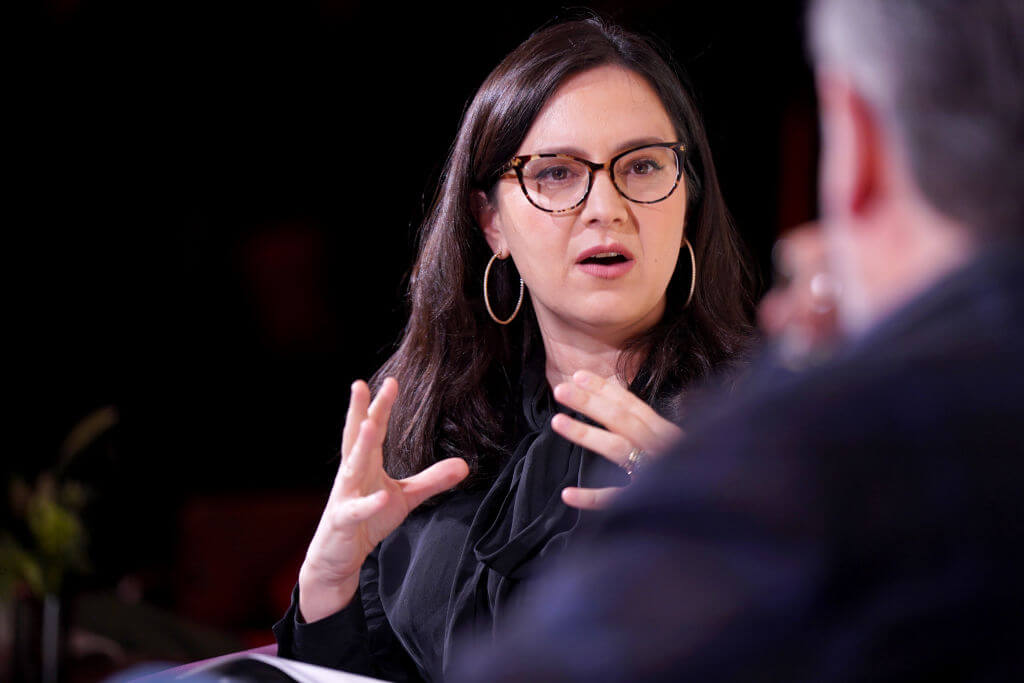This Palestinian chef loves Bethlehem’s delicious, seasonal cuisine. He’s afraid it could soon be destroyed
A conversation with Fadi Kattan about his hometown’s food, multiculturalism and resilience under Israeli occupation
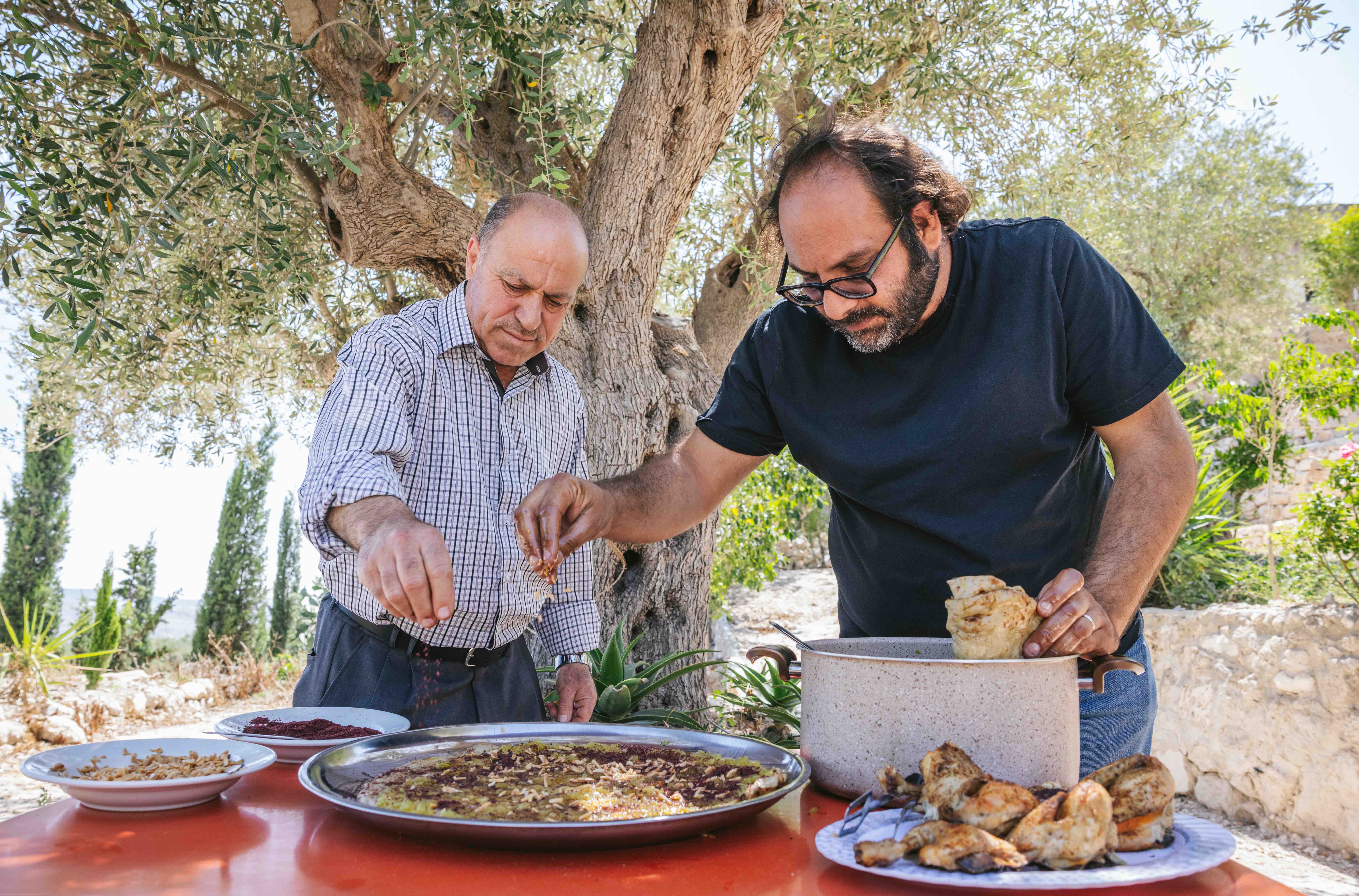
Fadi Kattan, right, prepares musakhan, a dish of flatbread and onion confit covered in purple sumac and olive oil, with Abu Mohammad, left, a restaurant owner in the West Bank village of Sebastia. Photo by Elias Halabi
“I don’t see the world based on people’s faiths,” Franco-Palestinian Chef Fadi Kattan told me over Zoom from his London restaurant Akub, where a row of bottles of Palestinian wine lined the wall behind him.
“That’s my French bit of my identity,” he said. “I see you as an American citizen. I don’t know what your religion is. I don’t care.”
That worldview is also informed by his upbringing in Bethlehem, the West Bank city that has long been home to both Christians and Muslims — and historically, Jews, he reminded me.
Kattan, whose Palestinian Christian parents and grandparents lived in the UK, France, Sudan, India and Japan in addition to their hometown of Bethlehem, has built a career as a culinary ambassador. He guides visitors through market stalls in Bethlehem, has hosted a radio show and YouTube series on Palestinian cooking, and is chef-owner of the contemporary Palestinian restaurants Fawda in the West Bank and Akub in London.
Now, Kattan hopes to spread the gospel of Bethlehem’s delicious, veggie-centric cuisine, and its pluralistic ethos, to home cooks around the globe. This spring, he released his first cookbook, Bethlehem: A Celebration of Palestinian Food.
The book is divided into four sections, one for each season: mafghoussa, or mashed, sauteed courgettes with lemon and garlic, in the spring, for example; fig jam in the summer; cauliflower-and-chicken makloubeh (a pot of seasoned rice, vegetables, and meat flipped upside-down) in the fall; squash cream soup in the winter.
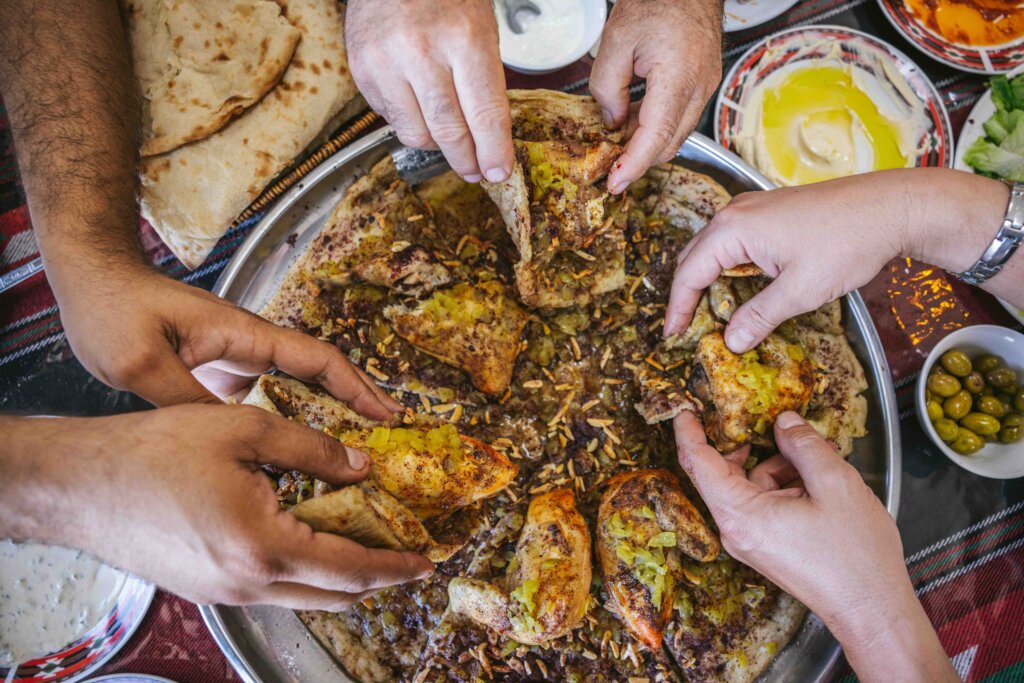
Between recipes, Kattan shares stories about his food-obsessed family and the Palestinian culinary artisans he works with. In an anecdote about Um Nabil, a beloved vegetable vendor in Bethlehem’s Old City, he writes, “Her eyes tear up when she talks about Christian-Muslim relations in Bethlehem, a subject we both have close to heart and are proud of.”
In his essay, “Oranges and Roses With Teta Emily,” he describes his family’s longing for the 120 acres of orange groves in Jaffa that he said were stolen from them overnight in 1948. “I’m tired of people saying, ‘oh, but you shouldn’t say that.’ That’s my history. That’s my family,” he told me. “It’s not a militant book. But when I tell the story of the Jaffa land in the book, that’s who I am.”
Kattan talked with me about Jewish cuisine in pre-1948 Palestine, his favorite source of “Palestinian umami,” and how the war in Gaza made him rethink his role as a chef.
This interview has been edited for brevity and clarity.
You write about how Palestinian Muslims eat “siyami-stuffed grape leaves and courgettes” [‘siyam’ means ‘fasting’ in Arabic] to break their fasts during Ramadan, and some Palestinian Christians eat them while refraining from eating animal products during Lent. Did Jews also eat them when breaking the fast on Yom Kippur?
That’s a piece of information that I don’t know, but I would imagine that my vegetarian siyami had been used by Jewish people that were Palestinian. I do think that historically, before the formation of Israel, Jews, Christians, Muslims, Samaritans and atheists were all residents of a place that was called “Palestina” since the Romans. And people there have generally eaten the same foods, but with different ritual or religious applications, and different restrictions. In my book, for example, there’s a pork recipe that comes from the Christian tradition that Muslims and Jews would not eat.
The Eurocentric, violent creation of Israel denied the Palestinianhood of the local Jews, and then the Arabhood of all the other Jews from other countries that were brought in. Today, Israel says shakshuka is Israeli, and it makes me very sad. Because shakshuka is Tunisian. By appropriating food, what people don’t understand is that it’s not only denying the food’s origin, but also the identity of a whole population.
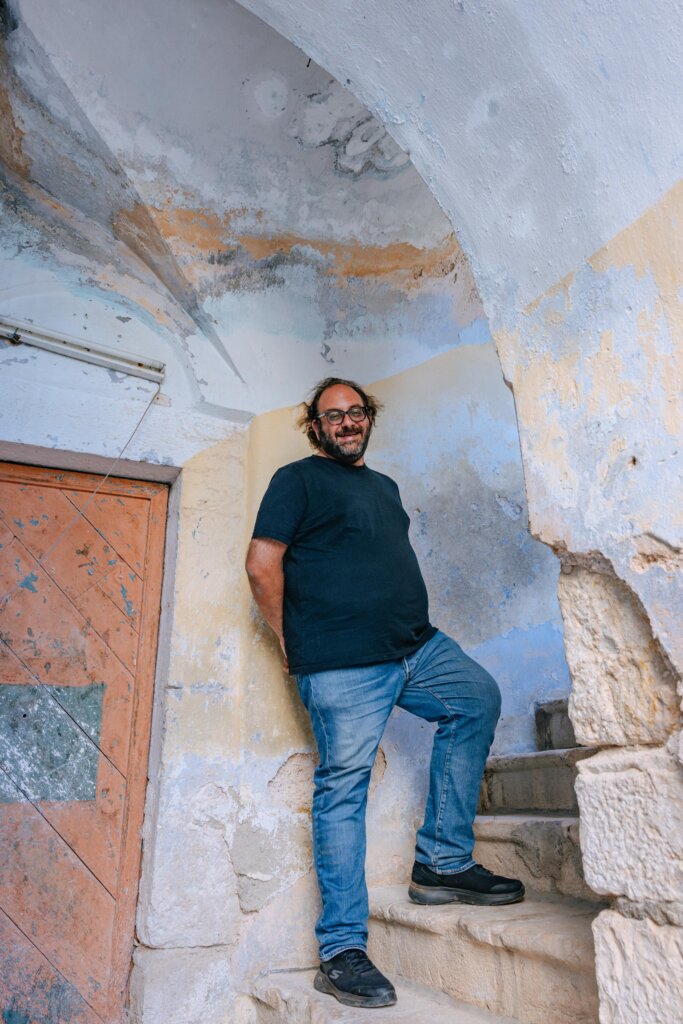
I get upset when the Israelis claim hummus as theirs. But the Palestinian Jews who’ve become Israeli — hummus is as much theirs as it’s mine. We’re the same people. But the Jews who came from Aleppo have more claim to the Aleppan kebab than I do. I’m not cooking kebabs with sour cherry.
In creating a modern nation which was not before a comprehensive national identity, Israel not only erased our right as Palestinians to the land, but also the richness of Jewish communities in Arab countries.
The Jewish community in Alexandria is Egyptian. OK, many of them ended up in Israel, and some of them in Europe and the United States — but they are Egyptian.
What is the moral sum of wanting to erase 4,000 years of Jewish history in Baghdad vis-a-vis trying to make all of that sound as if it was 4,000 years of horror, which is not true? I mean, go back to Haroun Al-Rashid’s court, and the local Jewish community was present during a time where science, culture, art and cooking flourished. You can’t claim it was all black darkness.
Your book focuses a lot on farmers and culinary artisans in Palestine. Why is that?
They’re the ones that are actually preserving Palestinian food. The hard work is done by the artisans and farmers, particularly Palestinian farmers who are suffering from the impact of occupation and land grabs. And with climate change happening, it’s even worse, because over time, the quantity of water being given to Palestinian farmers is much less than what’s being given to Israeli settlers.
The spice-makers, the Arab Women’s Union, who do these fantastic pastries, they’re all people that are really managing to, within that resilience, preserve Palestinian truth, in spite of a horrible feeling of, ‘All of this is disappearing.’ Since the seventh of October, it’s been way worse.

At my restaurants, I’m working very closely with a lot of Palestinian winemakers. It’s the only time I’ve had this feeling of working with a terroir that’s disappearing. As a chef, you usually work with terroirs that are up-and-coming.
Abu Hussein and his son, Hussam Halaq, produce salt on the shores of the Dead Sea and preserve the Palestinian presence there. But also, they’re the only salt-makers on the shores of the Dead Sea that actually send back the water into the sea that is disappearing — yes, because of climate change, but also because of a massive Israeli industrial use of that water.
What are some of the core characteristics of Bethlehemite cuisine?
Bethlehem is at the crossroads between the desert and the typical inland Palestinian terroir, so you have figs, almonds, olives and grapes. And we’re not very far from the coast.
To me, the most iconic dish of Bethlehem is the [rice-and-vegetable-] stuffed grape leaves and courgettes. The sauteed silek, or chard, salad that is in the book is also very much Bethlehem. Chard grows more or less wildly around Bethlehem.
Bethlehem has this cyclical rhythm of plants, herbs, vegetables and fruits that have very, very short seasons. When the Mistakawi apricots come up in Beit Jala, which is the village next to Bethlehem, it’s a season of three to four weeks. They inspired the apricot baklawa that’s in the book. I also do kilos of jam, and I munch those apricots for every snack of the day.
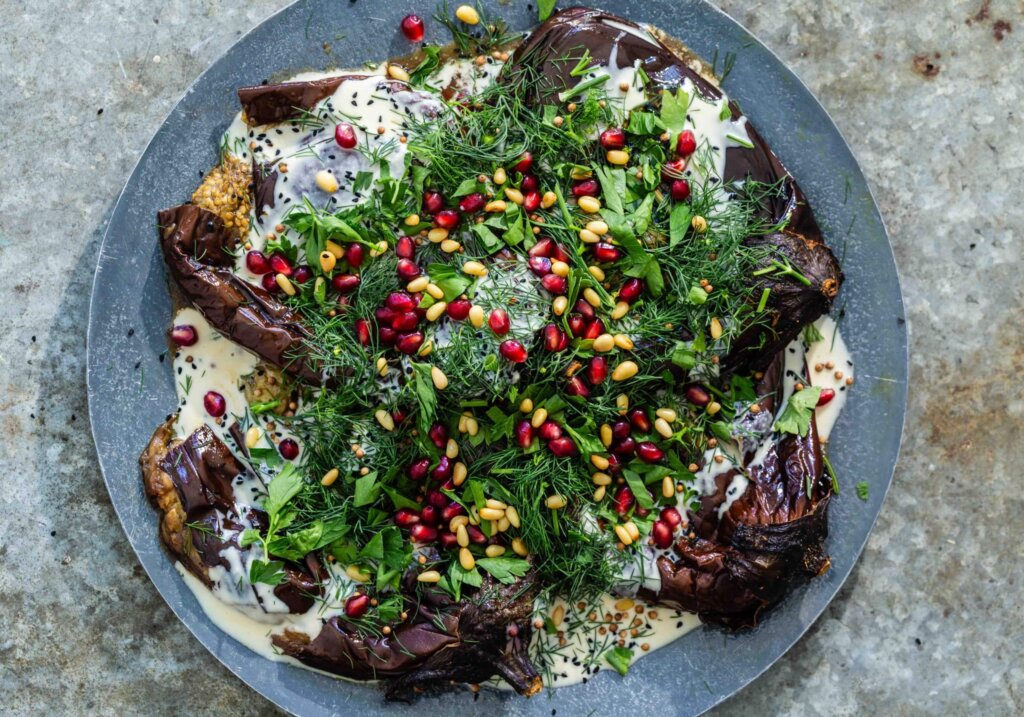
One of the ingredients you mentioned a lot in the book is laban jameed, which you call “Palestinian umami.” Could you tell me a little bit about it?
Laban jameed comes from the Bedouin tradition. It’s yogurt that’s salted and sun-dried. Traditionally, we rehydrate it to make a sauce for the mansaf, which is a rice and meat dish. But I use it over salads and crumble it. It’s like an intense balance of acidity and sourness, and it works in any dish.
I’m totally obsessed. A secret revealed: When I travel, I always keep sumac and laban jameed in my bag.
While you were getting ready to publish this book, war broke out between Israel and Hamas. How has the war affected your understanding of the book and your work?
The first few weeks after the war, I could not cook at all. I asked, “Why am I still cooking?” People are being forcibly starved.
What I also saw is a lot of people dehumanizing us, saying Palestinians are that horrible image Netanyahu created of us — [the biblical nation of] Amalek. That’s why I think it’s important to remind people: We’re a very diverse population. We have a fantastic cuisine. We have beautiful wine, we have great producers.
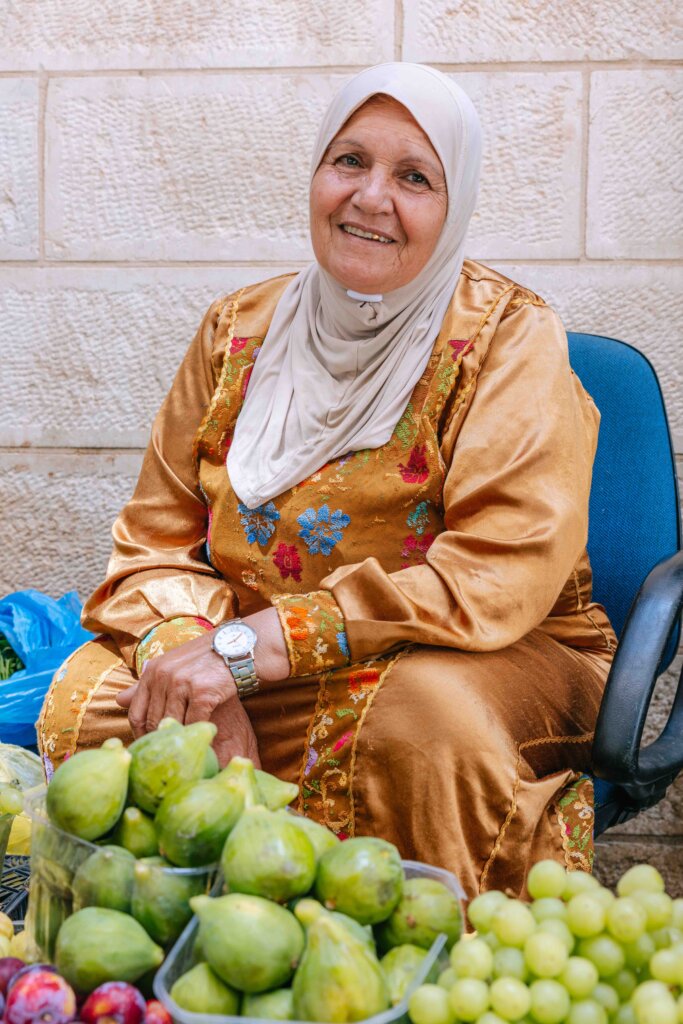
I do hope that the book helps people understand that we are not what Israel wants us to look like. I hope people will ask the question you asked about whether the lent recipe is also used for the Jewish tradition. Or, when they look at the story of slow-roasted lamb in the book, and the tannur that the Samaritans cook it in, they think of Pesach, and the exodus, and what everything symbolizes. That is our history. People who tell me, “Oh, you have to learn how to live together — ” We’ve been living together for 5,000 years. What is happening is something that was imposed on us.
What’s Bethlehem’s relationship like with Gaza?
Bethlehem and Gaza are 80 kilometers away, but they are separated by a chunk of land that has become Israel. Historically, there’s always been a link, because Gaza used to be the largest port on that side of the Mediterranean. The cuisine is different from Bethlehem’s in some ways. In Gaza, you have a lot of chilis in food, because traditionally the export of chilis from India to Europe passed through the Gaza port, and the chilis stayed. They use a lot of dill, which we don’t use as much of. Of course, fish is very present in Gaza.
I have family in Gaza. The shatta, which is a spicy condiment that originates in Gaza — that’s something I grew up with. The sayadieh samak, which is a rice and fish recipe that originates in Gaza and Jaffa, is as well.
If I had to rewrite the book right now, I think I would do a whole section about Gaza. Because of the savage bombardment of Gaza, the oldest restaurant of fish in Gaza, Abu Hasira, was bombed.
My constant fear is, “What’s next? Is the West Bank next?” Will we see the destruction of our cuisine, of our lands? Look at what’s happening: the settler attacks; the land grabs; the violence. Will that persist? I don’t know. I hope not. I hope that there will be a stop to this insanity.












